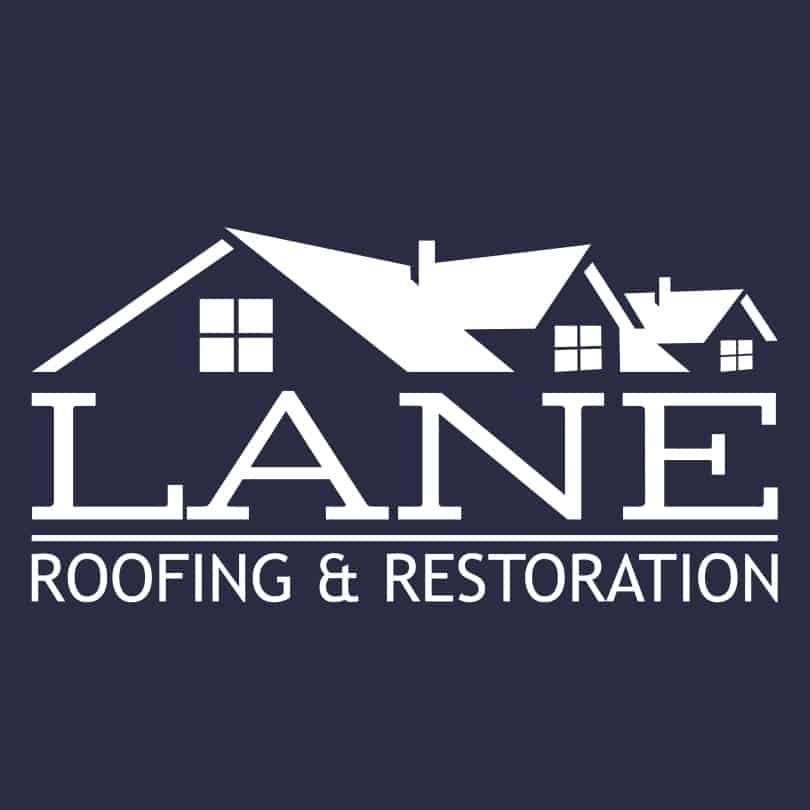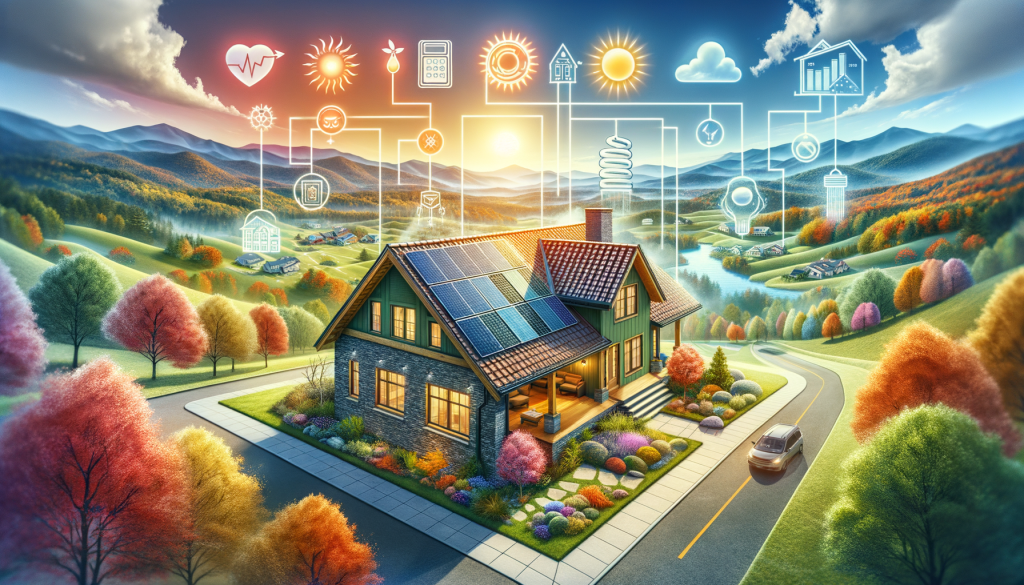When it comes to managing your home’s energy costs in Western North Carolina, most people immediately think about insulation, windows, or HVAC systems. But there’s a silent hero working tirelessly above your head that plays a crucial role in your home’s energy performance: your roof.
Here in Asheville, where we experience all four seasons in their full glory—from summer heat waves to freezing winter nights—your roof works overtime to protect your home and maintain comfortable indoor temperatures. As locals who’ve weathered countless Blue Ridge Mountain seasons, we at Lane Roofing and Restoration understand the unique challenges our climate presents to Asheville homeowners seeking energy efficiency.
Walking through the historic neighborhoods of Montford or the winding roads of North Asheville, you’ll notice the diverse roofing styles that dot our mountain landscape. Many of these homes are losing hundreds of dollars annually through outdated or inefficient roofing systems—money that could be better spent enjoying everything our vibrant community has to offer. The good news? Modern roofing solutions can dramatically change this equation.
How Your Roof Impacts Energy Consumption
Your roof is your home’s first line of defense against the elements, but it’s also a key player in your energy efficiency strategy. A poorly designed or aging roof can drastically increase your heating and cooling costs through several mechanisms:
Heat Transfer: In summer, a dark or inefficient roof absorbs solar heat, which radiates into your attic and upper floors. This creates what roofing professionals call a “heat island effect” on your home, forcing your air conditioning to work harder. During Asheville’s increasingly warm summers, this can lead to significantly higher cooling bills.
Air Leakage: Small gaps, deteriorating flashing, or damaged shingles create pathways for conditioned air to escape. This is particularly problematic during winter when warm air rises and seeks any available exit through your roof structure.
Moisture Problems: Roof issues often lead to moisture intrusion, which can dampen insulation and reduce its effectiveness. We see this frequently in older Asheville homes, where years of our region’s abundant rainfall have gradually compromised roofing materials.
Understanding these dynamics is the first step toward making smarter roofing choices that benefit both your comfort and your wallet.
Energy-Efficient Roofing Materials for Asheville Homes
Choosing the right roofing material is crucial for maximizing energy efficiency in our mountain climate. Here’s how different options perform in Western North Carolina’s unique environment:
Cool Roofing Options: These materials reflect more sunlight and absorb less heat than standard roofing. For Asheville homes that receive full sun exposure, especially those nestled on south-facing mountain slopes, cool roofing can reduce cooling costs by 15-30% during summer months.
Metal Roofing: A favorite among Asheville homeowners for good reason. Metal roofs reflect solar heat rather than absorbing it, can last 50+ years with proper maintenance, and handle our mountain snow loads beautifully. They’re also fully recyclable at the end of their lifespan, appealing to our community’s environmental values.
Architectural Shingles: These dimensional shingles offer better insulation properties than standard asphalt shingles while complementing traditional Asheville architectural styles. They’re available in cool-roof rated options that help moderate attic temperatures.
Sustainable Options: For eco-conscious homeowners, materials like recycled metal, sustainably harvested wood shakes (with proper fire-resistant treatments for our mountain environment), and synthetic slate made from recycled materials offer excellent energy performance with reduced environmental impact.
Each material has its optimal application depending on your home’s location, sun exposure, and architectural style. What works perfectly for a home in Kenilworth might not be ideal for a property in Leicester or Black Mountain.
The Role of Roof Color in Energy Efficiency
While material choice is important, color selection significantly impacts your roof’s energy performance. The physics are straightforward: darker colors absorb heat, lighter colors reflect it. But the application requires nuance in our four-season climate.
In Asheville’s mixed climate, the ideal roof color depends on your home’s specific situation. If your property is heavily shaded by our beautiful native trees, a darker roof might help absorb valuable winter warmth. For homes with full sun exposure, lighter colors can reduce summer cooling demands.
Modern roofing technologies have created options that give you the best of both worlds. Solar reflective dark colors use special pigments that maintain the traditional appearance many Asheville homeowners prefer while still reflecting a significant portion of solar energy.
We’ve helped hundreds of local homeowners find that perfect balance between aesthetic preferences and energy performance, often saving them thousands in energy costs over the roof’s lifespan.
Ventilation: The Unsung Hero of Roof Efficiency
Even the most energy-efficient roofing material will underperform without proper ventilation. In fact, inadequate ventilation is one of the most common issues we encounter when inspecting Asheville homes.
A well-designed ventilation system creates a continuous flow of air through your attic space. This airflow serves multiple critical functions:
In summer, it prevents heat buildup that would otherwise radiate down into your living spaces. During our humid mountain summers, this can make the difference between a comfortable home and one that’s constantly fighting heat.
In winter, it helps prevent ice dams by keeping your roof deck at a consistent temperature. This is particularly important for homes in higher-elevation Asheville neighborhoods that receive more significant snowfall.
Year-round, proper ventilation removes moisture that would otherwise condense in your attic, protecting your roof decking and insulation from damage and maintaining their effectiveness.
The right combination of soffit vents, ridge vents, and potentially power ventilators creates this crucial airflow pattern. We design ventilation systems based on your specific roof configuration and local climate factors to maximize energy benefits.
Insulation: Completing the Efficiency Puzzle
Your roofing material and ventilation work in tandem with proper insulation to create a complete thermal barrier. Asheville’s climate demands adequate insulation with an R-value appropriate for our region (typically R-38 to R-60 for attics).
When upgrading your roof, it’s the perfect opportunity to evaluate your insulation. We often find that homes in older Asheville neighborhoods like Montford, Kenilworth, or Grove Park have insufficient insulation by modern standards. Adding proper insulation during a roofing project is significantly more cost-effective than doing it as a separate project later.
Modern insulation options like foam board, spray foam, or cellulose can be tailored to your specific home structure and needs. Each has advantages in different applications, and we can help determine which is best for your particular situation.
Seasonal Considerations for Asheville Roof Maintenance
Maintaining your roof’s energy efficiency is a year-round commitment that changes with our mountain seasons:
Spring: Inspect for winter damage, clear debris from valleys and gutters, and check for moss or algae growth that can degrade roofing materials and their reflective properties. Asheville’s abundant spring rainfall makes this a critical maintenance period.
Summer: Look for signs of heat damage or warping, ensure ventilation pathways remain clear, and consider applying reflective roof coatings if appropriate for your roofing material.
Fall: Remove leaves and debris that can trap moisture against your roof surface, check for damaged shingles before winter arrives, and ensure gutters are functioning properly to prevent ice dams.
Winter: Monitor for ice dam formation after snowfalls, especially on north-facing roof sections, and safely remove excessive snow loads when necessary.
This seasonal approach to maintenance helps preserve your roof’s energy-efficient properties throughout its lifespan. Many Asheville homeowners find that scheduled professional inspections provide peace of mind and catch small issues before they become energy-draining problems.
Return on Investment: Understanding the Numbers
Investing in energy-efficient roofing does require an upfront cost, but the financial returns are compelling for Asheville homeowners:
Energy Savings: Depending on your current roof condition and the efficiency upgrades you select, you can expect to reduce cooling costs by 15-30% in summer months and heating costs by 10-20% during winter.
Extended Lifespan: Energy-efficient roofing systems typically last longer because they experience less thermal stress and moisture problems. This means fewer replacements over your home ownership period.
Increased Property Value: In Asheville’s competitive real estate market, energy-efficient homes command premium prices. A high-performance roofing system is a selling point that stands out to environmentally conscious buyers drawn to our region.
Available Incentives: Tax credits, utility rebates, and incentive programs can significantly offset initial costs. These programs change regularly, so it’s worth exploring current options when planning your roofing project.
For most Asheville homeowners, an energy-efficient roof pays for its additional cost within 5-7 years through energy savings alone, with all subsequent savings going straight to your bottom line.
Making the Right Choice for Your Asheville Home
Every home in Western North Carolina has unique energy efficiency needs based on its location, construction, and your personal priorities. What’s right for a contemporary home in Biltmore Park may differ from what works best for a historic bungalow in West Asheville.
The most effective approach starts with a professional assessment that considers your specific situation. Factors like your home’s orientation, tree coverage, existing insulation levels, and architectural requirements all play important roles in determining the optimal energy-efficient roofing solution.
As your neighbors and local roofing experts, we understand Asheville’s unique climate challenges and architectural character. We’re committed to helping fellow community members make informed decisions that balance immediate budget concerns with long-term energy performance.
By investing in an energy-efficient roof today, you’re not just reducing your monthly utility bills—you’re enhancing your home’s comfort, extending its lifespan, increasing its market value, and contributing to our community’s sustainability goals. That’s what we call a wise investment in your Asheville home’s future. Moreover, with the rise of climate-conscious living, choosing energyefficient roofing solutions in asheville not only benefits you but also serves as a positive example for your neighbors. These innovative materials are designed to reflect sunlight and reduce heat absorption, further decreasing your reliance on heating and cooling systems. As you embrace this sustainable choice, you’re also paving the way for a greener future for generations to come.
Ready to explore how an energy-efficient roof can transform your home’s performance through all four of our beautiful Asheville seasons? We’re here to help with honest guidance tailored to your specific needs.

